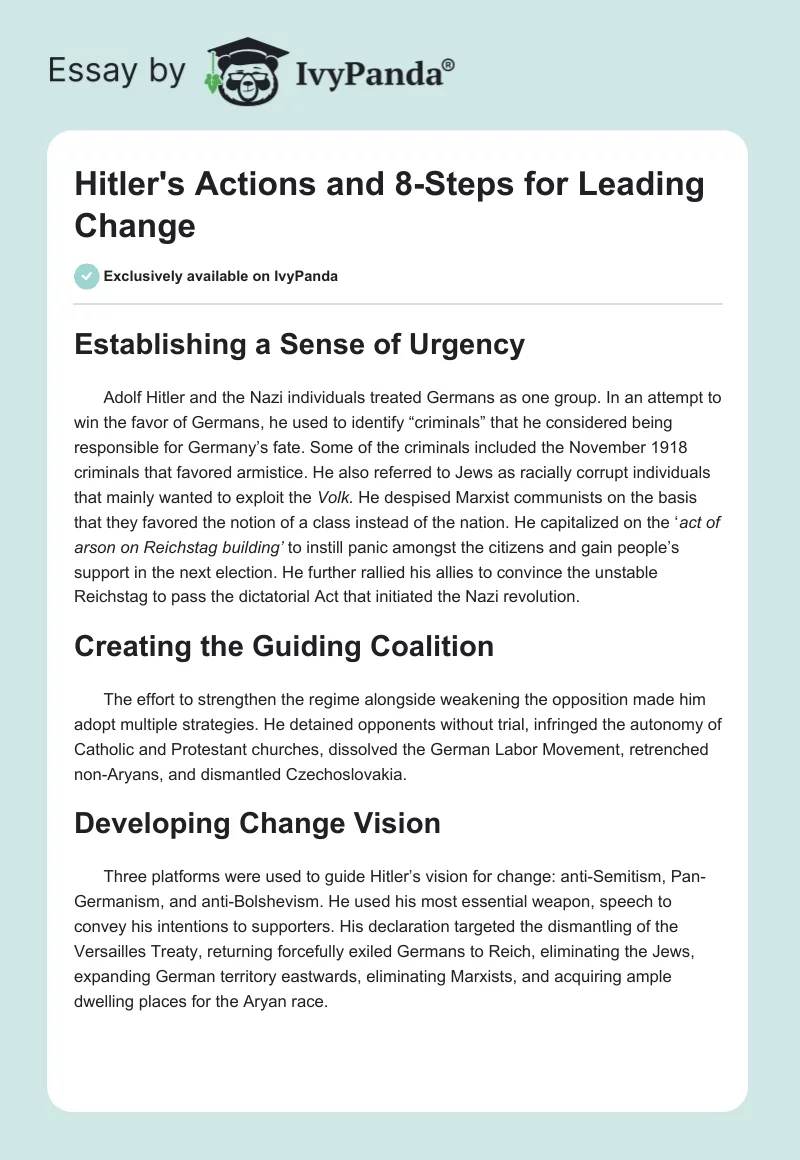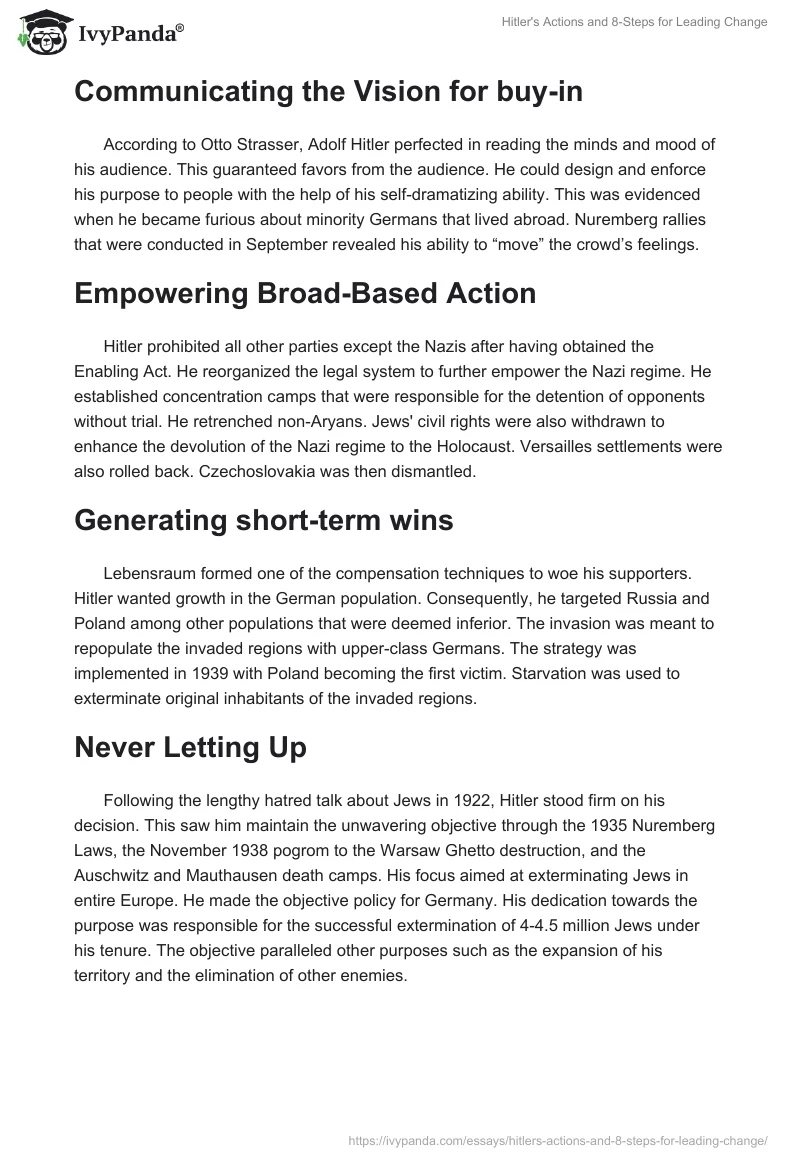Establishing a Sense of Urgency
Adolf Hitler and the Nazi individuals treated Germans as one group. In an attempt to win the favor of Germans, he used to identify “criminals” that he considered being responsible for Germany’s fate. Some of the criminals included the November 1918 criminals that favored armistice. He also referred to Jews as racially corrupt individuals that mainly wanted to exploit the Volk. He despised Marxist communists on the basis that they favored the notion of a class instead of the nation. He capitalized on the ‘act of arson on Reichstag building’ to instill panic amongst the citizens and gain people’s support in the next election. He further rallied his allies to convince the unstable Reichstag to pass the dictatorial Act that initiated the Nazi revolution.
Creating the Guiding Coalition
The effort to strengthen the regime alongside weakening the opposition made him adopt multiple strategies. He detained opponents without trial, infringed the autonomy of Catholic and Protestant churches, dissolved the German Labor Movement, retrenched non-Aryans, and dismantled Czechoslovakia.
Developing Change Vision
Three platforms were used to guide Hitler’s vision for change: anti-Semitism, Pan-Germanism, and anti-Bolshevism. He used his most essential weapon, speech to convey his intentions to supporters. His declaration targeted the dismantling of the Versailles Treaty, returning forcefully exiled Germans to Reich, eliminating the Jews, expanding German territory eastwards, eliminating Marxists, and acquiring ample dwelling places for the Aryan race.
Communicating the Vision for buy-in
According to Otto Strasser, Adolf Hitler perfected in reading the minds and mood of his audience. This guaranteed favors from the audience. He could design and enforce his purpose to people with the help of his self-dramatizing ability. This was evidenced when he became furious about minority Germans that lived abroad. Nuremberg rallies that were conducted in September revealed his ability to “move” the crowd’s feelings.
Empowering Broad-Based Action
Hitler prohibited all other parties except the Nazis after having obtained the Enabling Act. He reorganized the legal system to further empower the Nazi regime. He established concentration camps that were responsible for the detention of opponents without trial. He retrenched non-Aryans. Jews’ civil rights were also withdrawn to enhance the devolution of the Nazi regime to the Holocaust. Versailles settlements were also rolled back. Czechoslovakia was then dismantled.
Generating short-term wins
Lebensraum formed one of the compensation techniques to woe his supporters. Hitler wanted growth in the German population. Consequently, he targeted Russia and Poland among other populations that were deemed inferior. The invasion was meant to repopulate the invaded regions with upper-class Germans. The strategy was implemented in 1939 with Poland becoming the first victim. Starvation was used to exterminate original inhabitants of the invaded regions.
Never Letting Up
Following the lengthy hatred talk about Jews in 1922, Hitler stood firm on his decision. This saw him maintain the unwavering objective through the 1935 Nuremberg Laws, the November 1938 pogrom to the Warsaw Ghetto destruction, and the Auschwitz and Mauthausen death camps. His focus aimed at exterminating Jews in entire Europe. He made the objective policy for Germany. His dedication towards the purpose was responsible for the successful extermination of 4-4.5 million Jews under his tenure. The objective paralleled other purposes such as the expansion of his territory and the elimination of other enemies.
Incorporating Changes into the Culture
The pursuit and successful granting of the Enabling Act prohibited all other parties except the Nazi’s. By so doing, Hitler could easily implement his plans in Germany without any opposition. Hitler’s persistence towards his purposes contributed to his success in incorporating changes into the culture of Germans. He could patiently insist on an idea even if he entre party was against it.


